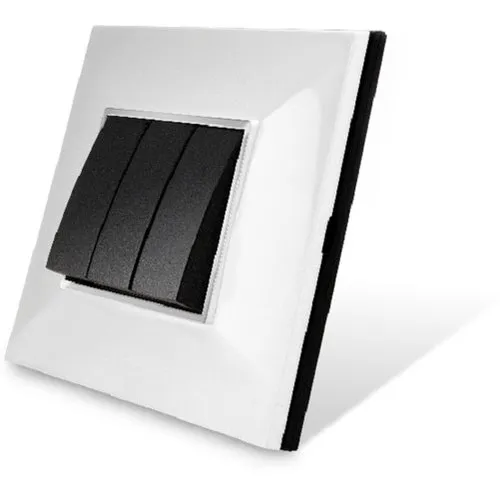As the digital landscape continues to evolve, switches will play an increasingly central role in managing complex systems across various industries. The continuous growth of digital infrastructure, alongside new innovations in automation, will push the boundaries of switch technology, creating new applications that we haven’t yet imagined. These technological advancements will fundamentally change how we interact with and control the systems in our environment, enhancing efficiency, security, and personalization.
One area where switches will make a significant impact is in smart grid technology. As more homes and businesses adopt renewable energy systems such as solar panels and wind turbines, the need for efficient energy management will become critical. Switches in these systems will monitor energy production and distribution, adjusting the flow of electricity based on real-time data from energy sources, storage systems, and the grid. Smart switches will optimize the use of renewable energy, reducing waste and enhancing the stability of power grids by controlling when to store excess energy or release it to meet demand. This will contribute to the transition toward a more sustainable, resilient energy infrastructure.

In the realm of consumer electronics, the future of switches is shifting toward touchless, gesture-based, and voice-controlled technology. Traditional switches are being replaced by sensors that detect motion or voice commands, enabling users to control their environment with minimal physical interaction. For example, switches that respond to hand gestures or voice commands could control lighting, temperature, and entertainment systems in smart homes. As AI algorithms improve, these switches will become more intuitive, learning user preferences and adapting to them over time. With the increasing use of virtual assistants like Amazon Alexa, Google Assistant, and Apple’s Siri, switches will be able to operate seamlessly within the larger ecosystem of smart devices, providing a frictionless and customized user experience.
The expansion of augmented reality (AR) and virtual reality (VR) technologies will also drive innovations in switch technology. As AR and VR applications continue to grow in popularity, switches will need to accommodate new types of interaction. For instance, switches could be embedded in wearables like AR glasses, enabling users to control digital environments through simple eye movements or hand gestures. In VR settings, switches could function as intuitive, virtual controls, allowing users to lülitid manipulate virtual environments with a level of precision and ease that traditional physical switches can’t offer.
Furthermore, healthcare devices are becoming increasingly sophisticated, and switches will need to adapt to manage the next generation of wearable health technologies. Future healthcare applications will rely on switches to control wearable devices that monitor vital signs like heart rate, blood oxygen levels, and blood pressure. These switches could also be integrated with other medical technologies, such as sensors that detect changes in a patient’s condition and automatically alert healthcare providers. As telemedicine grows, switches will be used to enable secure communication between remote monitoring systems and healthcare professionals, improving the efficiency of patient care and enhancing overall health outcomes.
In the context of smart cities, switches will be crucial for managing and controlling urban infrastructure. As cities become more connected through IoT technology, switches will be responsible for overseeing a vast range of systems, including transportation, waste management, street lighting, and public safety. For example, switches could be used to optimize traffic lights, adjusting the timing of signals based on real-time traffic conditions, reducing congestion and pollution. Smart streetlights will automatically adjust their brightness based on pedestrian or vehicle traffic, saving energy during off-peak hours. Additionally, switches in public transportation systems could optimize scheduling and routing, ensuring that buses and trains run efficiently and reduce delays for passengers.
The development of advanced robotics will also rely heavily on switches. Robots, whether used in manufacturing, healthcare, or service industries, need reliable and fast-switching technology to manage their operations. In factories, robots will be able to perform tasks such as assembling products or performing quality control inspections, all while relying on switches to control their movements and interactions with other machinery. In healthcare, robotic systems used for surgery or patient care will require switches that enable precise control, ensuring that operations are conducted safely and effectively. Additionally, with the rise of autonomous robots, switches will need to respond to a broader range of inputs, from environmental changes to user commands, in real time.
Switches will also be a key component in the evolution of autonomous vehicles. In electric vehicles (EVs), switches will manage power distribution, ensuring that the vehicle operates efficiently and that the battery is charged optimally. As autonomous vehicles gain ground, switches will control various onboard systems, from navigation to safety mechanisms. These switches will need to operate with extremely low latency to ensure that vehicles can respond to changes in the environment and make decisions in real time, from avoiding obstacles to adjusting speed for optimal fuel efficiency.
As blockchain continues to disrupt industries such as finance, supply chain management, and cybersecurity, switches will become an integral part of blockchain-based systems. Blockchain technology relies on highly secure, decentralized networks, and switches will play a critical role in ensuring data integrity and access control. These switches will be responsible for verifying transactions, managing access to encrypted data, and ensuring that blockchain networks run efficiently. For example, switches could be used to control the distribution of cryptocurrency in a secure manner, ensuring that digital wallets and assets are transferred safely and transparently.
The growth of artificial intelligence (AI) and machine learning will further enhance the functionality of switches. With the power of AI, switches will not just respond to commands but will anticipate needs and take proactive actions based on patterns and environmental cues. For example, in industrial settings, AI-powered switches could monitor equipment performance and automatically adjust settings to optimize production, preventing downtime and improving efficiency. In consumer applications, AI-enabled switches will learn user preferences and offer a higher degree of automation, creating more personalized experiences in the home, office, or automobile.
Security will continue to be a significant focus of switch technology, especially in the context of biometric authentication and data privacy. The use of biometric identifiers—such as fingerprints, facial recognition, or voice recognition—will become more widespread in switches, offering secure and personalized access to various devices and systems. These switches will ensure that only authorized individuals can access sensitive information, whether in financial systems, healthcare networks, or personal devices. With growing concerns around cybersecurity, switches that incorporate these authentication methods will provide an added layer of protection against unauthorized access.
